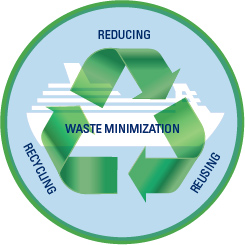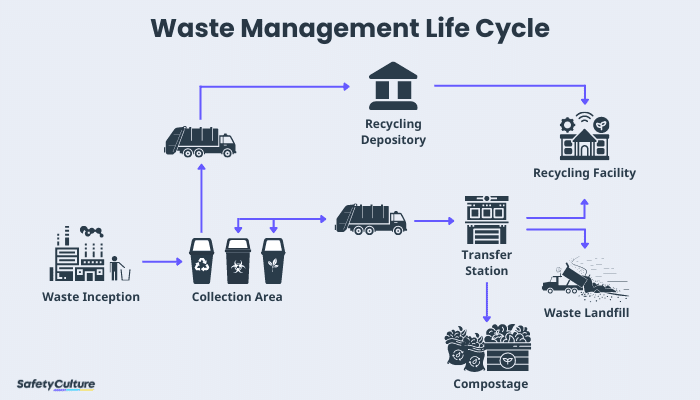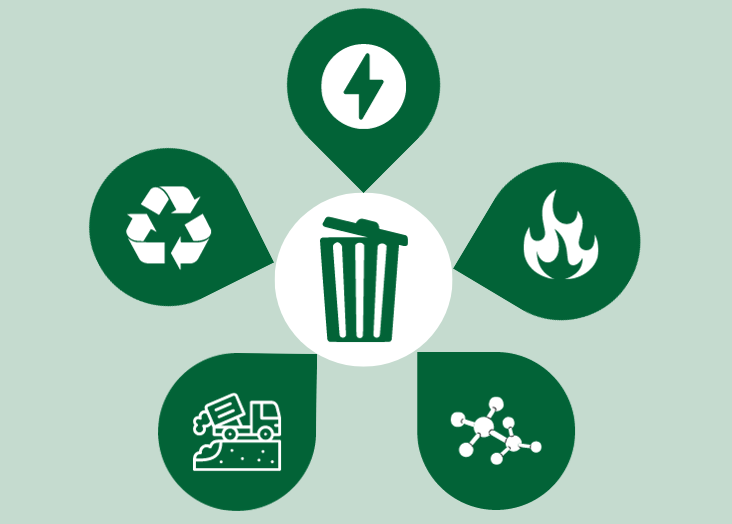How Recycling Lives Services Make a Distinction in Lasting Waste Management
How Recycling Lives Services Make a Distinction in Lasting Waste Management
Blog Article
Exploring Various Sorts Of Waste in Modern Waste Administration Systems
The contemporary landscape of waste management involves navigating a complicated range of waste types, each requiring specialized handling and disposal methods to mitigate ecological effects. Community strong waste, hazardous waste, digital waste, and organic waste each present distinctive difficulties and possibilities for resource recuperation.
Local Solid Waste
Municipal strong waste, often described as home garbage or trash, includes a variety of discarded materials created by property, commercial, and institutional resources within a community. This waste stream typically consists of items such as product packaging, food scraps, lawn trimmings, paper, plastics, textiles, and discarded family products. The administration of local solid waste is a critical element of city preparation and public wellness, necessitating effective collection, transportation, and disposal systems.
Efficient waste administration systems are developed to decrease environmental effect while optimizing source recovery. This frequently entails a mix of techniques consisting of composting, recycling, and landfilling. Reusing programs target products like paper, glass, metals, and specific plastics, diverting them from garbage dumps and reestablishing them into the production cycle. Composting organic waste, such as food scraps and lawn trimmings, not only decreases land fill use but also creates beneficial dirt amendments.
Towns should likewise resolve the logistical and economic challenges related to waste management. Implementing pay-as-you-throw systems, improving public understanding, and spending in innovation can dramatically improve waste diversion prices. By incorporating these techniques, districts can cultivate lasting neighborhoods, minimize greenhouse gas discharges, and save all-natural resources.
Hazardous Waste

Effective harmful waste management includes numerous essential actions: recognition, segregation, treatment, and disposal. Recognition requires the classification of waste based on its harmful buildings. Segregation guarantees that harmful materials are kept individually from non-hazardous waste to protect against cross-contamination. Therapy methods, such as chemical neutralization, incineration, and stablizing, are employed to decrease the toxicity, volume, or wheelchair of the waste. Disposal options, consisting of protected landfills and underground storage, are selected to make certain long-term control.
Governing structures, such as the Resource Conservation and Healing Act (RCRA) in the United States, provide standards and requirements for dangerous waste administration. Adherence to these guidelines, combined with improvements in waste treatment innovations, is necessary in mitigating the risks connected with contaminated materials.
Electronic Waste
Digital waste, generally described as e-waste, stands for a quickly growing difficulty in waste administration systems around the world. This kind of waste incorporates discarded electronic devices and devices such as mobile phones, computer systems, televisions, and various other digital home appliances. The rapid rate of technological improvement, coupled with lowering product lifespans and customer demand for the most recent devices, has significantly increased the quantity of e-waste created each year.
E-waste is particularly bothersome due to its complex composition, often containing home unsafe substances like lead, cadmium, and mercury, which position significant ecological and health dangers if not effectively handled. Conversely, e-waste also has beneficial products such as gold, silver, and copper, which can be recouped and recycled. The double nature of e-waste-- both harmful and beneficial-- requires customized handling, recycling, and disposal processes.
Efficient e-waste management involves rigid regulatory structures, robust collection systems, and advanced reusing innovations. Public recognition and participation are critical, as inappropriate disposal techniques, such as prohibited discarding and informal recycling, intensify environmental contamination and carcinogen. Improving e-waste administration methods is important for reducing ecological impact and recouping valuable resources in a significantly digital globe.

Organic Waste
Organic waste, consisting of kitchen scraps, backyard trimmings, and farming residues, represents a significant portion of the international waste stream. This sort of waste is biodegradable, suggesting it can be broken down by bacteria into less complex natural substances. Regardless of its capacity for natural disintegration, improper administration of organic waste can cause damaging ecological effects, consisting of the discharge of greenhouse gases such as methane, which add to climate change.
Reliable monitoring of organic waste is critical for minimizing these ecological impacts (recycling lives services). Composting is a commonly adopted approach, changing organic waste right into nutrient-rich compost that can enhance soil health and wellness and agricultural productivity. In addition, anaerobic food digestion is an arising technology that transforms natural waste into biogas, a sustainable power source, and digestate, which can be utilized as plant food
Municipalities and waste administration entities should carry out durable natural waste collection and treatment programs to take full advantage of the benefits of these procedures. Public education campaigns can additionally play an essential duty in motivating homes and businesses to separate natural waste from other kinds of waste. By prioritizing the management of natural waste, societies can lower land fill usage, lower greenhouse gas emissions, and produce useful byproducts for agricultural usage.

Cutting-edge Waste Monitoring
In the world of waste administration, cutting-edge methodologies are changing exactly how cultures manage their refuse, intending for sustainability and efficiency. One popular technology is the application of clever waste containers geared up with sensors that check fill levels and optimize collection courses.
An additional notable advancement is the adoption of waste-to-energy (WtE) innovations. By transforming non-recyclable waste into functional energy via processes such as incineration and anaerobic food digestion, WtE decreases land fill problem and offers a renewable resource resource. Innovations in chemical recycling allow for the failure of complicated plastics into their original monomers, making it possible for the development of new, top notch plastic products.
Additionally, the circular economic situation model is obtaining grip, stressing the layout of items and systems that focus on reusability top article and resource effectiveness. This all natural method encourages industries to lessen waste generation from the beginning. Via these ingenious approaches, modern-day waste administration systems are not only resolving the instant difficulties of garbage disposal but likewise leading the way for an extra lasting future.
Final Thought
A comprehensive understanding of basics local solid waste, contaminated materials, digital waste, and natural waste, coupled with the execution of cutting-edge waste management options, is imperative for alleviating environmental influences. Integrating technologies such as smart waste bins and waste-to-energy systems can improve performance and sustainability. Effective waste monitoring techniques not only foster source recuperation but additionally advertise public understanding and participation, eventually contributing to the development of a round economic situation.
The modern landscape of waste management includes browsing a complicated variety of waste types, each calling for specialized handling and disposal techniques to reduce environmental effects. Community solid waste, unsafe waste, digital waste, and organic waste each present distinct obstacles and opportunities for source healing.Electronic waste, typically referred to as e-waste, represents a quickly growing obstacle in waste management systems worldwide. Through these innovative strategies, modern waste management systems are not only dealing with the prompt obstacles of waste disposal however additionally paving the means for a much more lasting future.
An extensive understanding of local solid waste, unsafe waste, electronic waste, and organic waste, coupled with the execution of innovative waste management remedies, is crucial for reducing environmental impacts. (recycling lives services)
Report this page